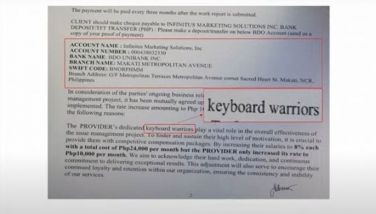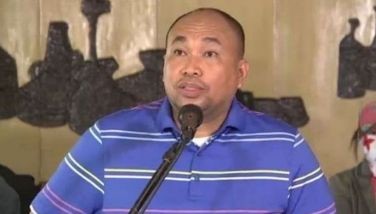The cost of money

Years ago when my late husband and I were deep into advocacy work for kababayans in London, I wanted to write a different perspective on migrant workers.
A nugget of truth was being overlooked by opinion makers in Western media.
Migrant workers from poor countries including Filipinos were beating the world financial system by earning in currencies more valuable than their own. The Chinese and Indian workers were ahead. Later Filipinos were also trading hard earned dollars/pounds/liras etc. into pesos. Few were aware of the brilliant financial strategy this implied. This was how bankers made their millions on currency trading.
So without being conscious of it, ordinary Filipino workers taking lowly jobs abroad were playing the same game bankers do.
Poor countries had their own revenge against Western banks that lent enormous sums of money to them. Western banks and financial multilaterals were assured they would be paid regardless of circumstances because a country does not go bankrupt. Interest or none, this was capital that Filipinos needed for houses, businesses and the education of their children among other things. There were others who worked abroad to advance their fortunes in the rat race simply by being paid in more valuable currencies.
During Imelda’s reign, bankers flocked to the IMF meeting in Manila to unload their petrodollars as development loans. One American banker said “if they want to borrow beyond their means, give it to them.” It seemed like a doomed situation.
Ordinary Filipinos, as individuals, looked to work abroad as a way out of their economic problems. While they might not have thought about it in this way, Filipinos overseas were acting collectively much like an invading army sent abroad to get back at the money lenders.
It has to do with the cost of money and national currencies inherent in modern economies. Indeed, it is through exchange rates that we are able to put a value to items from cou^try to ountry. Exchange rates are what make it possible to trade and to travel because one nation’s currency is not acceptable in another.
For example, you can’t walk into a restaurant in New York and pay for the meal in pesos. Neither can you pay for a lowly hamburger in McDonalds in pesos. So if we have to be facetious, $10 for hamburger when translated to pesos is P500. That is just as untenable when you can buy the same hamburger for less than a hundred pesos.
When I lived in London and Filipinos visited they invariably complain about high prices. No wonder. They were converting their pounds into pesos. If you do that then you will never buy anything, not even a tube of toothpaste.
In general, at least as far as I knew then it is safe to say that the cost of living in London and Manila is 1 to 1. I would pay the same amount for a French meal in London as I would in Manila but this changes radically when you translate the cost of the meal in pesos because the exchange rate between a peso and a pound is roughly P70 so it becomes 70 times more expensive.
The cruelty, if it must be called that, is in the fluctuating values of national currencies and their interplay in the international monetary system. So perhaps we should also look into that when complaining about the cost of food in New York when the cost is translated into pesos. On the other hand think of the remittances of Filipinos living in the US when they remit a billion dollars to their relatives in the Philippines. It becomes 50 billion pesos and it is partly what has kept the Philippines above water when most are drowning in a financial crisis that first blew out of the United States.
* * *
There is something else driving American gossip columnists to write on what the president ate when she was in New York and how much it had cost. It is politics. It is politics that would look for anything to trivialize the President’s trip on the invitation of President Obama. (By the way he is also being bad mouthed for his health reform program).
Whoever the instigator was he had access to American gossip columns and able to connect it to helpful media and politicians to create the anger needed for regime change. It is not something new to Americans in the way they deal with Filipinos even if they profess close friendship. American writers themselves are writing that the origins of the Iraqi war were in the Philippines. But has Filipino media picked that up?
* * *
It is a wonder how Bayan Ko has become a protest song of Filipinos against Filipinos in the sweep of emotions during EDSA 1 and its revival on Cory’s death. I wonder how many understand the lyrics and the origins of the song. Here are the lyrics:
Ang bayan kong Pilipinas
Lupain ng ginto’t bulaklak
Pag-ibig ang sa kanyang palad
Nag-alay ng ganda’t dilag.
At sa kanyang yumi at ganda
Dayuhan ay nahalina (CNP italics)
Bayan ko, binihag ka
Nasadlak sa dusa.
Ibon mang may layang lumipad
Kulungin mo at umiiyak
Bayan pa kayang sakdal dilag
Ang di magnasang makaalpas!
Pilipinas kong minumutya
Pugad ng luha ko’t dalita
Aking adhika,
Makita kang sakdal laya!
Jose Corazon de Jesus wrote the lyrics of the song in 1929, and Constancio de Guzman set the music for it. It was written as a protest song against the American occupation of the Philippines.
Someone should find out how a song like Bayan Ko crying for independence from Americans has became the song of protest rallies. Unless, of course, Filipino protesters do not know what they sing about.
- Latest
- Trending






























